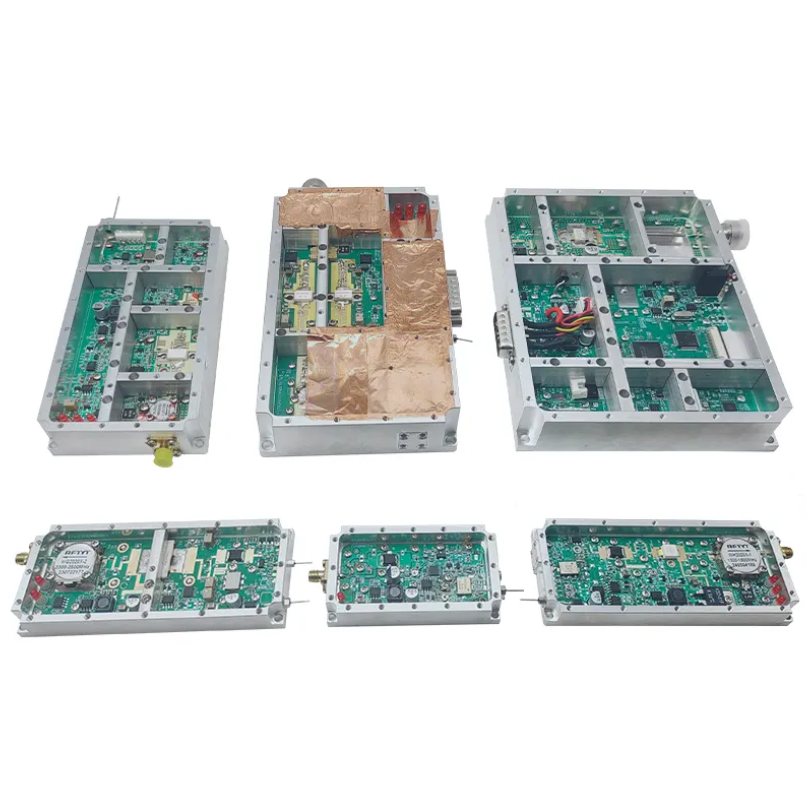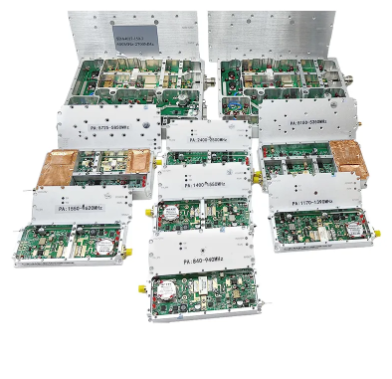How Do RF Wireless Modules Improve Data Transmission Range and Reliability?
RF wireless modules are critical for sending data between devices without wires, but their effectiveness depends on two key factors: how far they can transmit (range) and how consistently they deliver data (reliability). From smart home sensors to industrial monitors, these modules use a mix of hardware and software tricks to boost both. Let’s explore the key ways RF wireless modules improve data transmission range and reliability.
1. Frequency Selection: Matching Waves to Distance
The radio frequency a module uses directly affects how far its signal travels. RF wireless modules are designed to use frequencies that balance range and data speed.
- Lower frequencies for longer range: Frequencies below 1 GHz (like 868 MHz in Europe or 915 MHz in North America) travel farther than higher frequencies (2.4 GHz or 5 GHz). Why? Lower-frequency waves bend around obstacles (walls, trees) better and lose less energy over distance. For example, an RF wireless module using 915 MHz can send data 2–5 miles in open areas, while a 2.4 GHz module might only reach 1 mile under the same conditions.
- Higher frequencies for speed (when range is less critical): Frequencies like 2.4 GHz carry more data faster but don’t travel as far. They’re better for short-range, high-speed needs (e.g., a smart TV connecting to a streaming device via an RF wireless module).
By choosing the right frequency, RF wireless modules optimize range for their intended use—long-range for farm sensors, shorter-range for home gadgets.
2. Power Management: Boosting Signal Strength
How much power an RF wireless module uses to send signals directly impacts its range. Modern modules balance power to extend both distance and battery life.
- Adjustable transmit power: Most RF wireless modules let users tweak how much power they use to send signals. Cranking up power (within legal limits) sends the signal farther—useful for remote devices like weather stations. Dialing it down saves battery for close-by devices (e.g., a smart light switch).
- High-sensitivity receivers: Even weak signals can be picked up by modules with sensitive receivers. This means an RF wireless module can “hear” a faint signal from far away, effectively extending its range without using extra power. For example, a receiver with -120 dBm sensitivity can detect signals 10x weaker than one with -110 dBm, adding miles to the range.
This balance of transmit power and receive sensitivity lets RF wireless modules reach farther while preserving energy.
3. Antenna Design: Focusing and Extending Signals
The antenna—whether built into the RF wireless module or added externally—shapes how far and reliably signals travel.
- High-gain antennas: These antennas focus signals in a specific direction, extending range. A directional high-gain antenna on an RF wireless module can send signals 3x farther than a basic antenna, making it ideal for point-to-point links (e.g., a warehouse sensor sending data to a central hub).
- Omnidirectional antennas: These spread signals in all directions, better for covering a wide area (e.g., a home hub using an RF wireless module to connect multiple smart devices). They don’t reach as far as directional antennas but work for networks with devices in many locations.
- Integrated vs. external antennas: Small RF wireless modules (like those in wearables) use tiny integrated antennas, balancing size and range. Larger modules (industrial sensors) often have ports for external antennas, letting users swap in higher-gain options for longer range.
A well-matched antenna turns a good RF wireless module into one that reaches farther and connects more reliably.

4. Modulation and Coding: Clearing Up the Signal
Even strong signals can get distorted by interference (other electronics, weather). RF wireless modules use smart encoding to keep data intact.
-
Spread-spectrum techniques: These spread the signal across a range of frequencies, making it harder for interference to block. For example:
- FHSS (Frequency Hopping Spread Spectrum): The RF wireless module switches frequencies hundreds of times per second, avoiding crowded channels. Bluetooth uses this to stay reliable in busy homes.
- DSSS (Direct Sequence Spread Spectrum): The signal is mixed with a “code” that the receiver recognizes, filtering out noise. Wi-Fi uses this to send data clearly even near other devices.
- Error-correction coding: Modules add extra data bits to each transmission. If some bits get lost, the receiver uses the extra bits to fix errors. This means even a slightly distorted signal can still deliver correct data—critical for reliability in noisy environments (e.g., factories with heavy machinery).
These techniques let RF wireless modules send data reliably, even when interference would otherwise corrupt it.
5. Network Topologies: Extending Range via Relays
RF wireless modules often work in networks, using other modules to “pass along” signals—extending range and adding backup paths.
- Mesh networks: In a mesh, each RF wireless module acts as a relay. If a sensor is too far from the hub, another module nearby forwards its data. This can double or triple the network’s total range. For example, a smart city network might use 100 mesh-connected RF wireless modules to cover 5 square miles, even if each module only reaches 0.5 miles alone.
- Redundant paths: Mesh networks also improve reliability. If one module fails, data takes a different route through another module. This ensures no single point of failure—critical for systems like emergency alert sensors.
By working together, RF wireless modules create networks that reach farther and stay connected even when individual modules face issues.
6. Adaptive Data Rates: Balancing Speed and Range
RF wireless modules adjust how fast they send data based on signal strength, ensuring reliability over varying distances.
- Slower rates for longer range: When a signal is weak (far from the receiver), the module slows down data transmission. Slower rates use simpler encoding, making the signal easier to decode. For example, an RF wireless module might send data at 1200 bps at 5 miles, vs. 50 kbps at 1 mile.
- Faster rates for close distances: When near the receiver, the module speeds up, sending more data in less time. This reduces latency (delay) for short-range, high-speed needs (e.g., a security camera streaming video to a hub).
This adaptability lets RF wireless modules maintain reliable connections across a wide range of distances.
FAQ
Does a higher frequency always mean shorter range for RF wireless modules?
Yes, generally. Lower frequencies (sub-GHz) travel farther because they bend around obstacles better and lose less energy. Higher frequencies (2.4 GHz, 5 GHz) are faster but shorter-range—good for close, high-data devices.
Can I upgrade an RF wireless module’s antenna to extend range?
Yes. Swapping a basic antenna for a high-gain external antenna can add 2–3x more range. Just ensure the antenna matches the module’s frequency (e.g., a 915 MHz antenna for a 915 MHz module).
How do RF wireless modules handle interference from other devices?
They use spread-spectrum techniques (hopping frequencies or spreading signals) and error-correction coding. These methods let the module “ignore” interference and fix minor data errors, keeping connections reliable.
Do mesh networks slow down data transmission?
A little—data takes extra time to hop through relays. But modern RF wireless modules minimize this delay (often under 1 second), making mesh networks a good trade-off for longer range and reliability.
Is more transmit power always better for range?
No. Higher power uses more battery and may exceed legal limits. RF wireless modules are designed to use the minimum power needed for the desired range, balancing performance and efficiency.

 EN
EN






